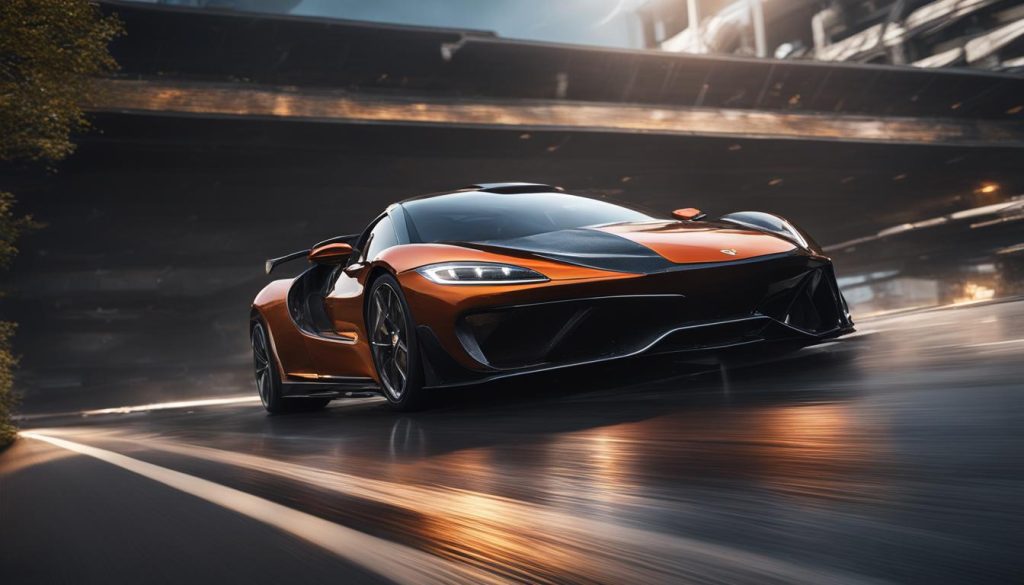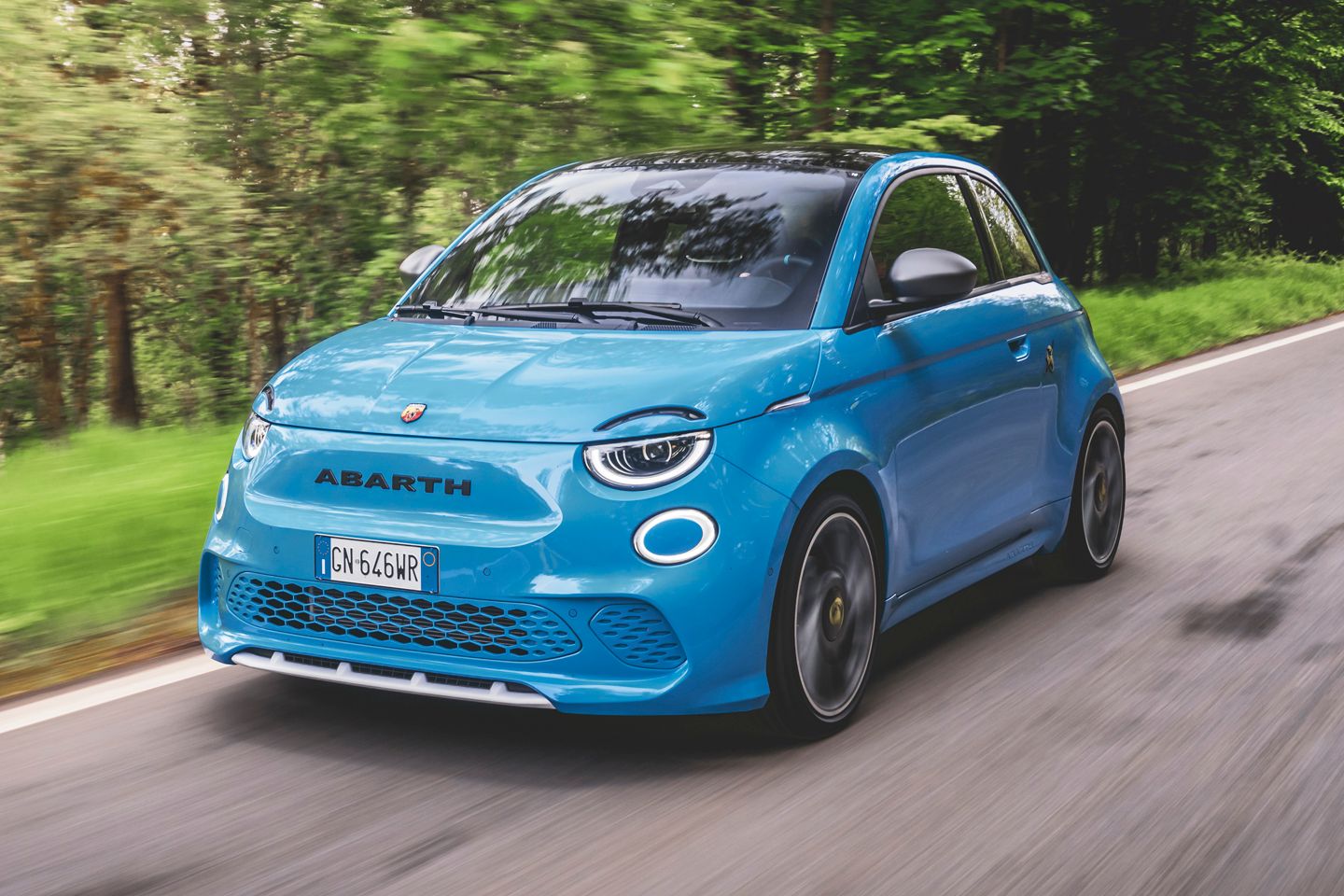
Bearing in mind this world is no picnic for any of us at the moment, you might not be ready to spare much of a thought for the plight of the automotive engineer. I think you should, though. And it’s those charged with creating the new breed of small, electric hot hatches that I worry about the most – a task I wouldn’t want for all the tea in China.
There was a time when Mr Hot Hatch Engineer had an easy life. Turn up to work, find a humdrum hatchback, open a drawer marked ‘Tasty cams,’ the one next to it containing all the ‘closer-stacked ratios,’ dig out some stiffer springs, give the turbo a tweak with a screwdriver, and Bob’s you uncle. All that remained was a holla to the boss saying: That’s a wrap, sir.
You’re probably thinking they have it even easier these days. The lazy gits don’t even have to change any parts to make a hot version of an EV – simply plug in a laptop and flick the setting marked ‘Hot Hatch: Version 2.0,’ and head to the canteen for a cup of tea. I’m not saying that doesn’t happen, but only if the base car has enough spare capacity in its battery to supply the extra power, while still leaving enough on the table for a decent range.
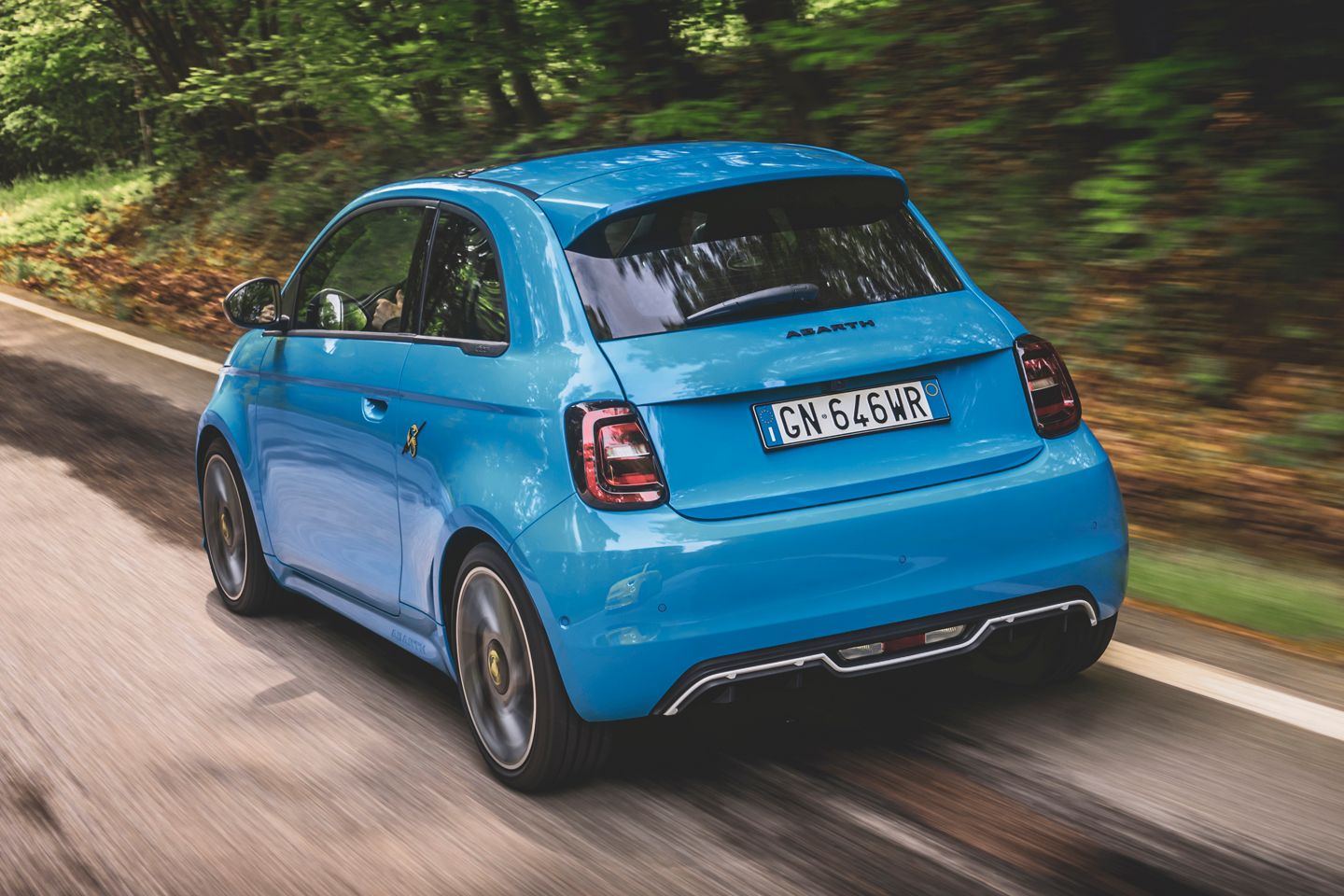

But that’s not the case with the Fiat 500e. So when Abarth looked at making a hottie out of the teeny tiny 500e, what to do? Talking to the engineers, not a lot, other than juggle with a whole bunch of hellish-sounding compromises concerning the hardware they had.
Think about it this way. If they stuck a much more powerful motor in the Abarth, that would drain the battery quicker. And when the Fiat 500e’s range is only 200 miles to begin with, you don’t really want it to be much less. To add more power, then, would also mean a bigger battery than the standard car’s 42kWh battery, but where do you make room for that? The 500e is a city car, remember. If they made the back seats or the boot any smaller they’d run the risk of it ending up in group test with a Porsche Cayman, with someone mistakenly thinking this was a new two-door, two-seat sports car. I’m exaggerating, of course, but hopefully you get my point.
Even if, by some miracle, you could make the battery bigger without compromising the space on board, you’d still be left with problems. A bigger battery means more weight, obviously, which means it would need more power just to negate the extra mass. And that would mean some of the precious extra capacity of the bigger battery is eaten up by the extra power required simply to move it along, even before they’ve made the car go any faster. Once that conundrum has been dealt with, there are all the other associated issues: extra weight makes the handling blunter and the ride harder. It would need bigger brakes, too, to stop the thing. That’s yet more weight, and so it goes on. This is basically an automotive vicious circle.


With all that in mind, you might be expecting the guys at Abarth to be quite haggered looking, but no, that’s not the case. They seemed remarkably perky, all things considered, and they explained why. It turns out they’ve been realistic. They didn’t consider a bigger battery at all. That simply wasn’t possible. Maybe as the technology improves, and they can get more kWhs out of a given physical size, but that’s for another day. They accepted, then, that they couldn’t add a more powerful motor, and the only extra power would have to come from being clever. They made the electric drivetrain more efficient by removing some of the losses in the system, and that’s gained an extra 35hp and 11lb ft. In total, the Abarth 500e has 153hp and 173lb ft. The range is less as a result, but at 164 miles it’s still just about acceptable for a city car.
Now, those outputs are less than the petrol Abarth 695 musters, so the 500e is slower from 0-62mph with a time of 7.0 seconds. But instead of fretting about that, they decided to focus on what’s important to a typical hot-city-car driver. The acceleration between 25-37mph, for instance, which is a second quicker than the ICE model. Some of that comes from the instant hit of motor torque, but also because they tweaked the final drive over the regular Fiat 500e to 10.2:1.
They also wanted to do something about noise, because as far as the Fiat 500e goes, there isn’t any. The 695, on the other hand, is very noisy, which is all part of its appeal, so they sampled that and stuck a sound generator in the boot of the Abarth 500e to reproduce it. It doesn’t just make noise in the car, it broadcasts it to innocent bystanders, too, and from outside it’s quite convincing. Less so inside, especially because there are no gears. It’s just a continuous sound that increases in pitch with the road speed, so at 70mph it’s quite a drone. It’s fun for a while but at a cruise you’ll want to turn it off, which is not easy. Instead of a simple switch to knock it on or off, you have to delve into the menus on the digital instrument binnacle, which is all rather a faff. And you can only do this when the car’s stopped, which is just stupid.
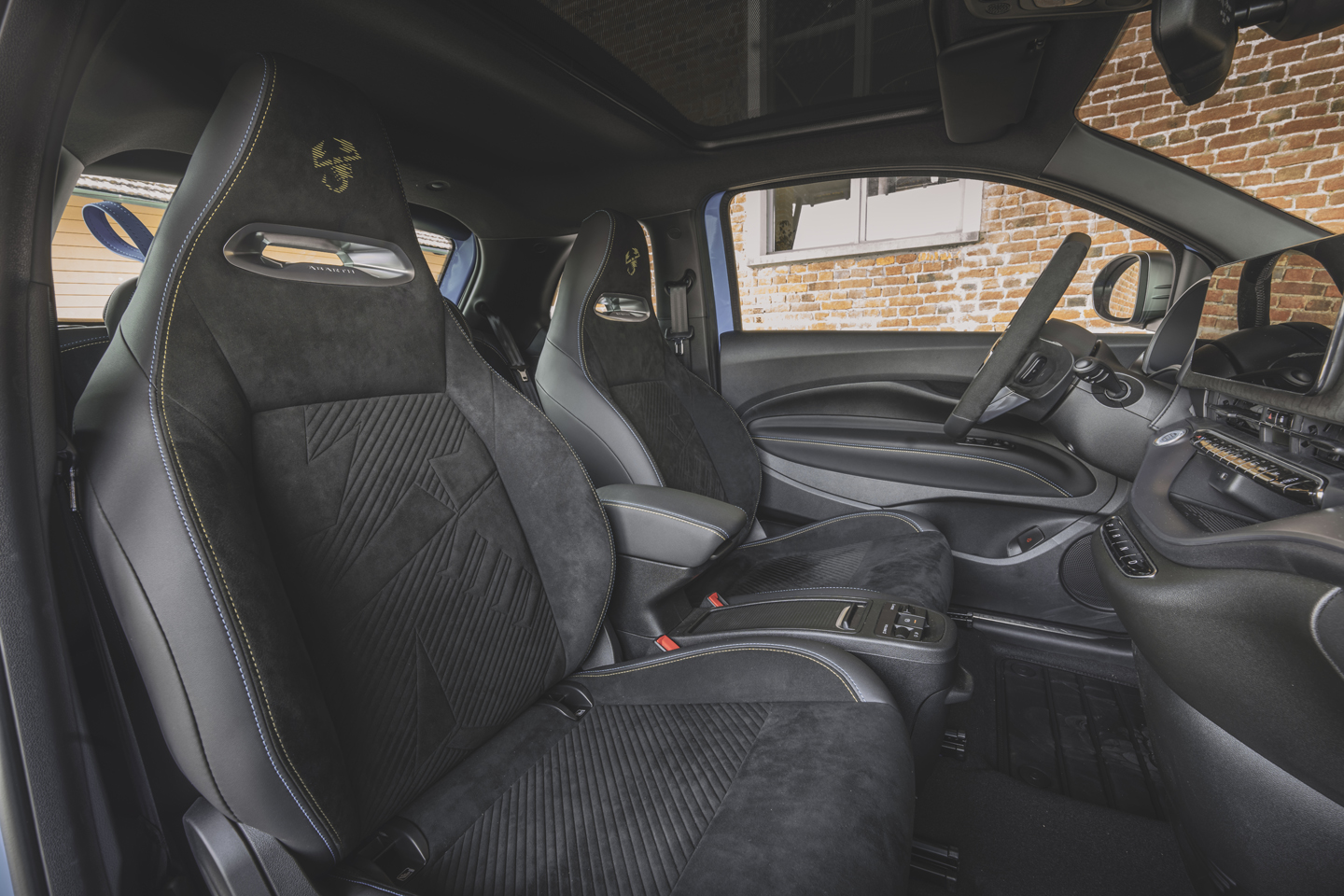
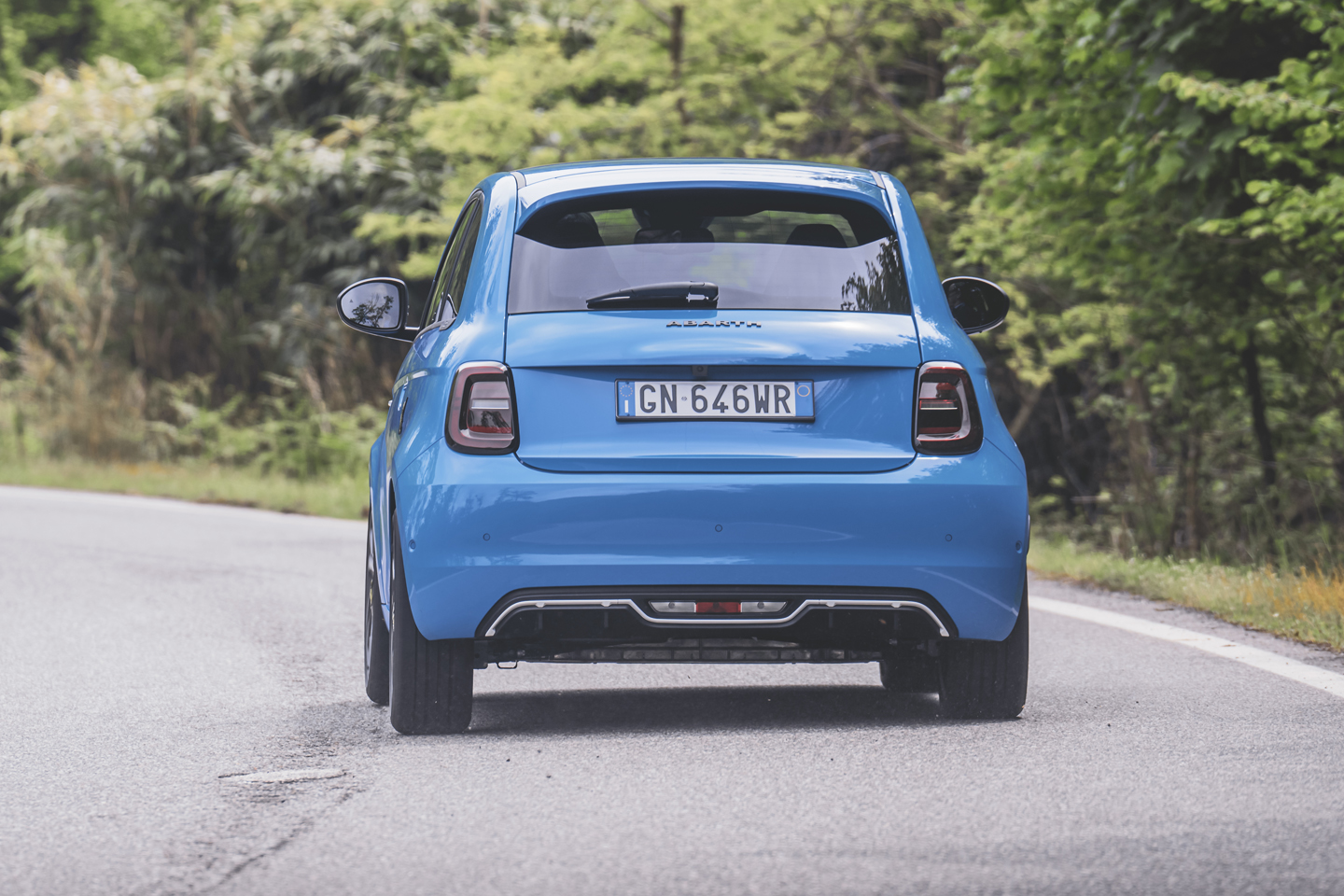
In other respects, though, the Abarth 500e is very good. I drove it around Balocco, which is Fiat’s test track outside Milan, and I had the opportunity to back-to-back it against the 695. Now, the 695 is more exciting and definitely more of a hot hatch. Its exhaust bark is real and rabid, its suspension stiff – enough for some mega lift-off oversteer on the wet track – and it’s noticeably quicker once you’re past 50mph. But despite all that, the Abarth 500e felt like it was the faster car round a lap. For a start, it produces more grip from its Bridgestone Potenza Sport tyres and also has a better 57:43 weight distribution. And while the suspension is stiffer than the Fiat version, it’s softer than the 695 so it rolls a little more, which makes it a lot less spiky in the wet than the petrol car and therefore much easier to be consistent around the lap. There’s a nice neutrality about it’s cornering, with the ability to trim your line by backing off the accelerator instead of finding yourself trimming a hedge as you disappear backwards through it.
Out on the road, it works much better than the 695. Without the sound generator on, it’s very quiet and even manages to suppress wind and road noise to an acceptable degree. Its softer, less reactive suspension does a fine job of soaking up bumps as well – to the point that I’d describe the Abarth 500e as comfortable. It’s still a city car with a relatively short wheelbase, so there’s some of fidget on rippled surfaces, but it deals with potholes very well and, thanks to well-judged damping, it stays settled though bends despite any surface unevenness.
Speaking of bends, I like the steering, too. It’s quite measured over the first few degrees of turn, so isn’t too darty, but ramps up after that so you can get the nose turned in eagerly. It’s a shame that the only way to switch off the one-pedal braking mode, which makes it hard to be smooth through corners, is by switching to Scorpion Track – the most aggressive of its three driving modes. That adds a bit too much heft to the steering (I preferred the lighter feel of it in Scorpion Street or Turismo), but the weight build up is still progressive and some sense of the road surface reaches your fingertips. One-pedal mode aside, the brakes are easy to modulate, too, so you can slow the 500e with a degree of finesse that’s not guaranteed with an electric car.
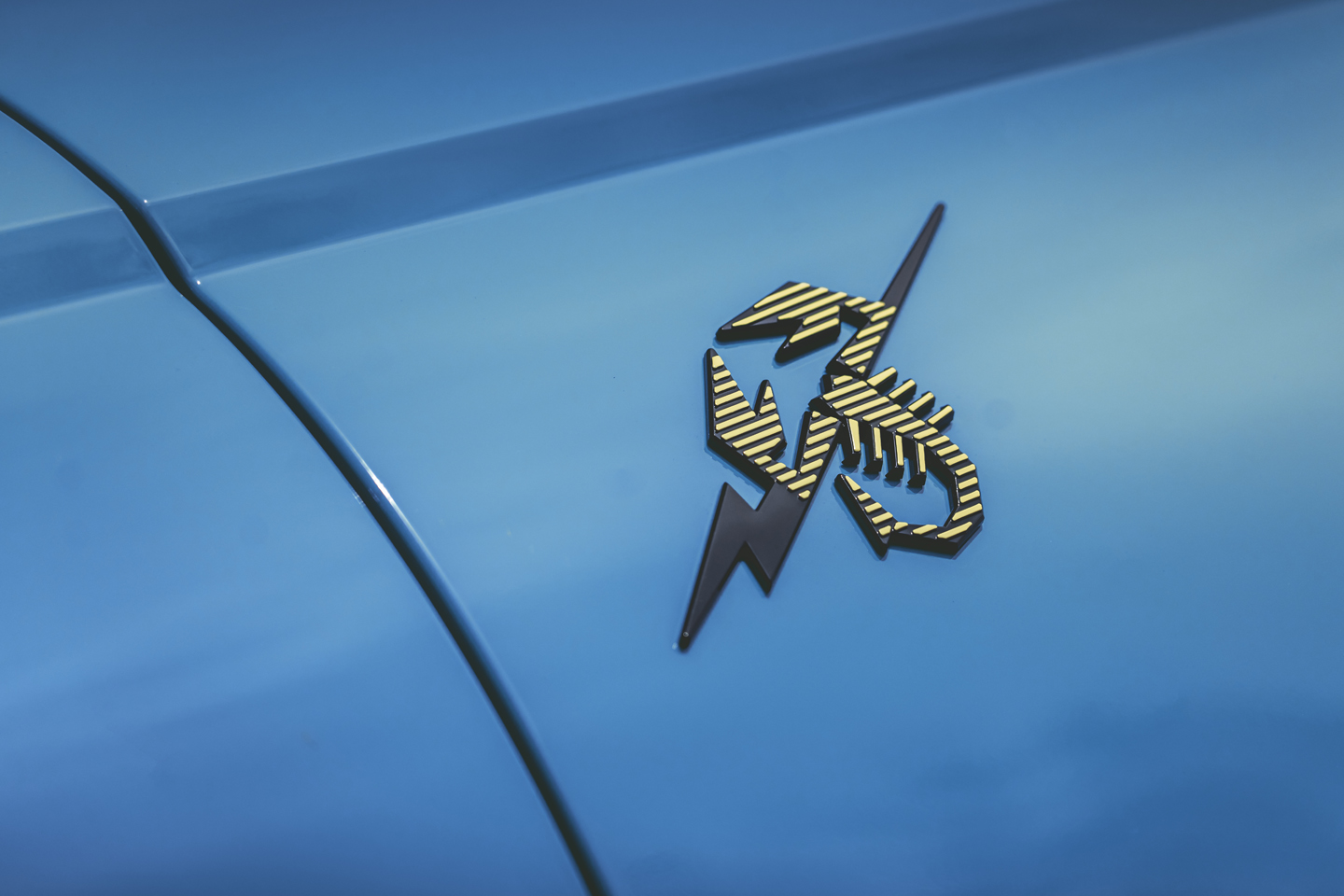
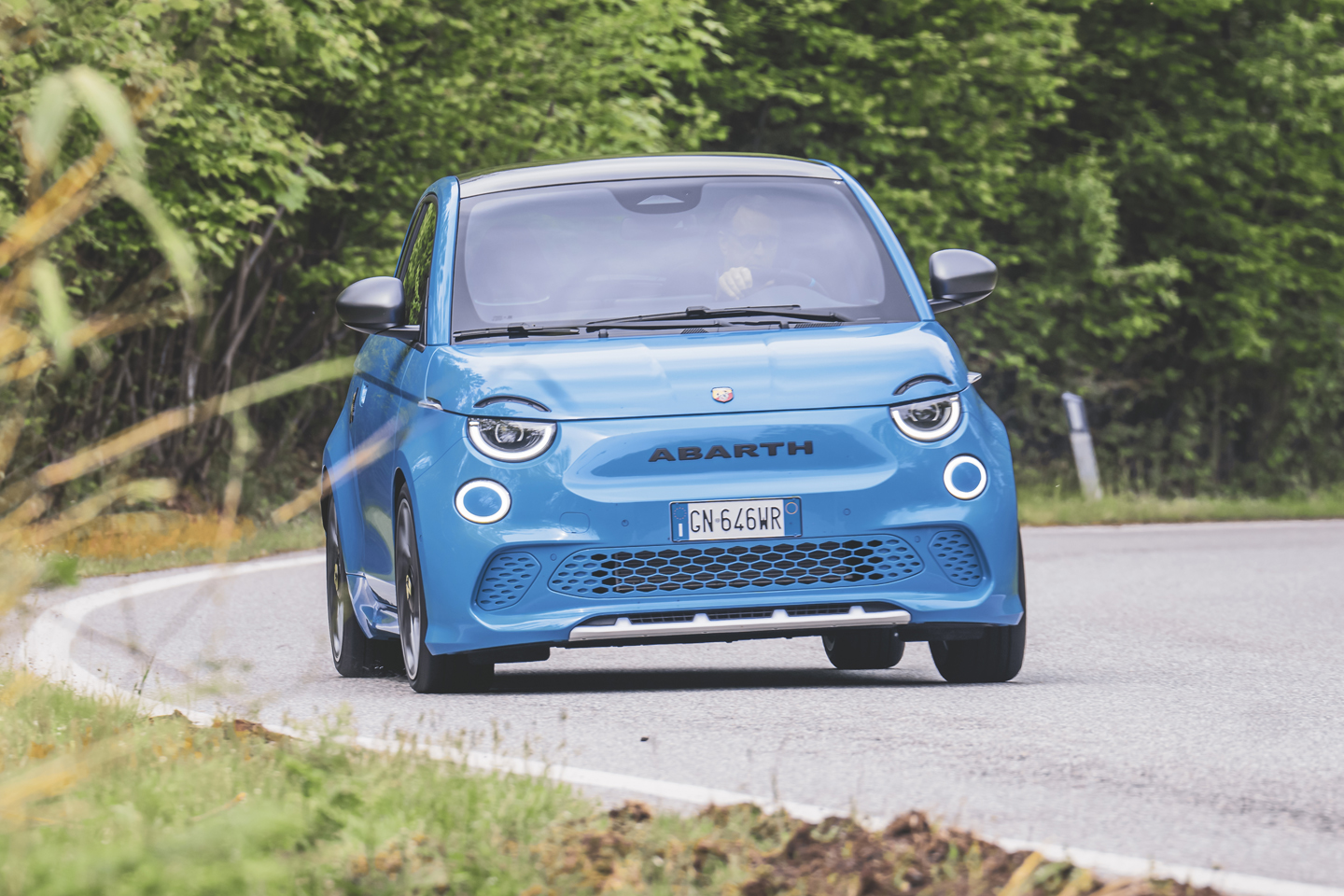
Is it fast? Well, not to the point of being truly grin-inducing, but I’d say it’s fast enough. And the way it punches out of corners makes it feel livelier than that seven-second-to-sixty-two time would suggest. It’s certainly got enough low-down poke to break traction easily on greasy roads, so you need to think about your accelerator inputs out of hairpins or from a standing start.
Is the Abarth 500e a great hot hatch, then? No, and it is a warning that developing the next generation of hot hatches is going to be a struggle for manufacturers – at least those with the constraints of hardware and a small budget to consider. We have become used to electric cars being quicker than internal-combustion equivalents – it’s almost the default – but that’s only the case when there’s spare capacity in the base car, or you’re building a bespoke performance car from scratch. It seems it’s a real challenge when that’s not the case.
I do think the Abarth 500e is a fine car, though. It rides and handles in a far more grown-up manner than the 695. Sure, the 695 is more exciting for an hour’s blast, but, let’s face it, it’s a deeply flawed package otherwise. The Abarth 500e is so much better resolved – to the point it’s almost incomparable – and I’m not just talking about how it drives. I’m talking also about the interior quality, the infotainment system and the driving position. The 695 is so heavily compromised by its high seating position and lack of reach adjustment for the steering, yet I felt perfectly comfortable in the 500e. It’s no longer a car you have to endure during day-to-day duties. But in terms of an exciting electric hot hatch, we’re going to have to wait a bit longer. Think of the Abarth 500e as more of a hot trim grade than a hot hatch, and then you won’t feel short-changed. I reckon that deep down Abarth knows that’s what it’s built, which is why the Abarth 500e starts at £34,195 – the same price as the Fiat 500e in its top trim. And given the choice, I would have the Abarth version every time.
SPECIFICATION | Abarth 500e
Engine: permanent magnet single electric motor
Transmission: one-speed auto, front-wheel drive
Power (hp): 155
Torque (lb ft): 173
0-62mph: 7.0 seconds
Top speed: 96mph
Weight: 1,410kg
Battery size: 42.2kWh (37.3kWh usable)
Charging: 85kW DC/ 0-80% 35 mins
Efficiency: 3.65 miles/ kWh
Electric range: 164 miles (WLTP)
Price: £34,195
#Abarth #500e #Review



